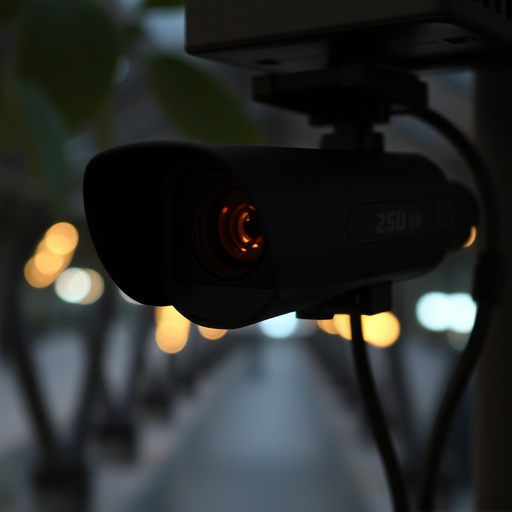Concealed cameras for front doors are advanced surveillance devices that blend into everyday objects, offering discreet yet powerful security for homes and businesses. With features like heat sensors, infrared technology, night vision, motion detection, and remote access via smartphone apps, these cameras enhance overall security. The latest tech includes signal scanning, multi-spectrum sensors, and thermal imaging to detect even the most concealed cameras, ensuring peace of mind and enhanced safety.
In an era where privacy is a precious commodity, understanding hidden recording device technology has become paramount, especially at our front doors. This article delves into the intricate world of concealed cameras, exploring their advanced features and capabilities. We present effective scanning methods to detect these devices, focusing on non-invasive techniques and signal analysis. Additionally, we discuss common hiding spots, best practices for security, and ethical considerations surrounding concealed cameras for front door installations, shedding light on a crucial aspect of modern home protection.
- Understanding Concealed Camera Technology
- – Types of hidden recording devices
- – Advanced features and capabilities
- Scanning Methods for Detection
Understanding Concealed Camera Technology
Understanding concealed camera technology is crucial when it comes to detecting and preventing security breaches, especially at entry points like front doors. These advanced devices are designed to blend seamlessly into their surroundings, often resembling everyday objects such as doorknobs, light switches, or even decorative items. They employ sophisticated techniques, including heat sensors and infrared technology, to capture footage without being noticed, ensuring round-the-clock surveillance.
Hidden cameras for front doors have evolved significantly, offering improved resolution, night vision capabilities, and motion detection features. This technology enables users to monitor their properties remotely via smartphone apps, providing peace of mind and enhancing overall security measures. With their discreet nature and advanced functionalities, these devices play a pivotal role in modern home and business security systems.
– Types of hidden recording devices
Hidden recording devices come in various forms, each with unique capabilities and purposes. From tiny concealed cameras for front door setups designed to protect homes and businesses to more sophisticated surveillance equipment used in forensic investigations, the range is extensive. These devices are often tailored to fit specific needs, be it personal safety, business security, or legal proceedings.
Among the most common types are Wi-Fi enabled cameras that can transmit footage directly to a smartphone or computer, making remote monitoring effortless. Others employ motion sensors to activate recording only when movement is detected, conserving battery life and enhancing privacy. Advanced models may also incorporate infrared technology for low-light conditions, while some are designed to mimic everyday objects like doorbells, power outlets, or even fake rocks, ensuring they remain undetected.
– Advanced features and capabilities
The latest advancements in hidden recording device technology offer a range of sophisticated features designed to enhance detection and prevent the placement of concealed cameras, particularly targeting vulnerable areas like front doors. One notable method involves advanced signal scanning techniques that can pinpoint the presence of covert surveillance equipment. These devices utilize multi-spectrum sensors and cutting-edge algorithms to analyze electromagnetic signatures, allowing for the identification of signals from hidden cameras and other tracking devices.
For instance, some models are equipped with thermal imaging capabilities, enabling them to detect heat signatures commonly emitted by camera components. Additionally, radio frequency (RF) signal scanning is employed to intercept wireless communication between hidden cameras and external receivers, providing crucial evidence of unauthorized surveillance. These advanced features ensure that even the most discreetly placed concealed cameras for front door monitoring can be revealed, offering homeowners and businesses enhanced security measures.
Scanning Methods for Detection
The detection of hidden recording devices, often referred to as concealed cameras, requires sophisticated scanning methods. One common approach is to utilize specialized thermal imaging technology, which can reveal heat signatures different from the surrounding environment, potentially indicating the presence of a camera lens or other electronic components. This method is particularly useful for Front Door Concealed Cameras, as it can uncover devices disguised behind or within door handles, peepholes, or even painted over surfaces.
Additionally, radio frequency (RF) scanning plays a crucial role in identifying hidden recording devices. Many modern cameras operate using wireless signals, leaving distinctive RF signatures that can be detected by specialized equipment. By sweeping the area with RF scanners, security professionals can pinpoint active camera signals, especially those disguised as common household appliances or power supplies. This technique ensures comprehensive coverage, making it ideal for thorough inspections of residential or commercial spaces, including front doors and entry points.
Hidden recording devices, often disguised as everyday items like doorknobs or light switches, pose a unique challenge. While their advanced features offer enhanced security, they require meticulous scanning methods to detect. For those seeking peace of mind, especially with concealed cameras for front door areas, understanding these technologies and utilizing dedicated scanning tools can help ensure your home’s safety and privacy are not compromised.
